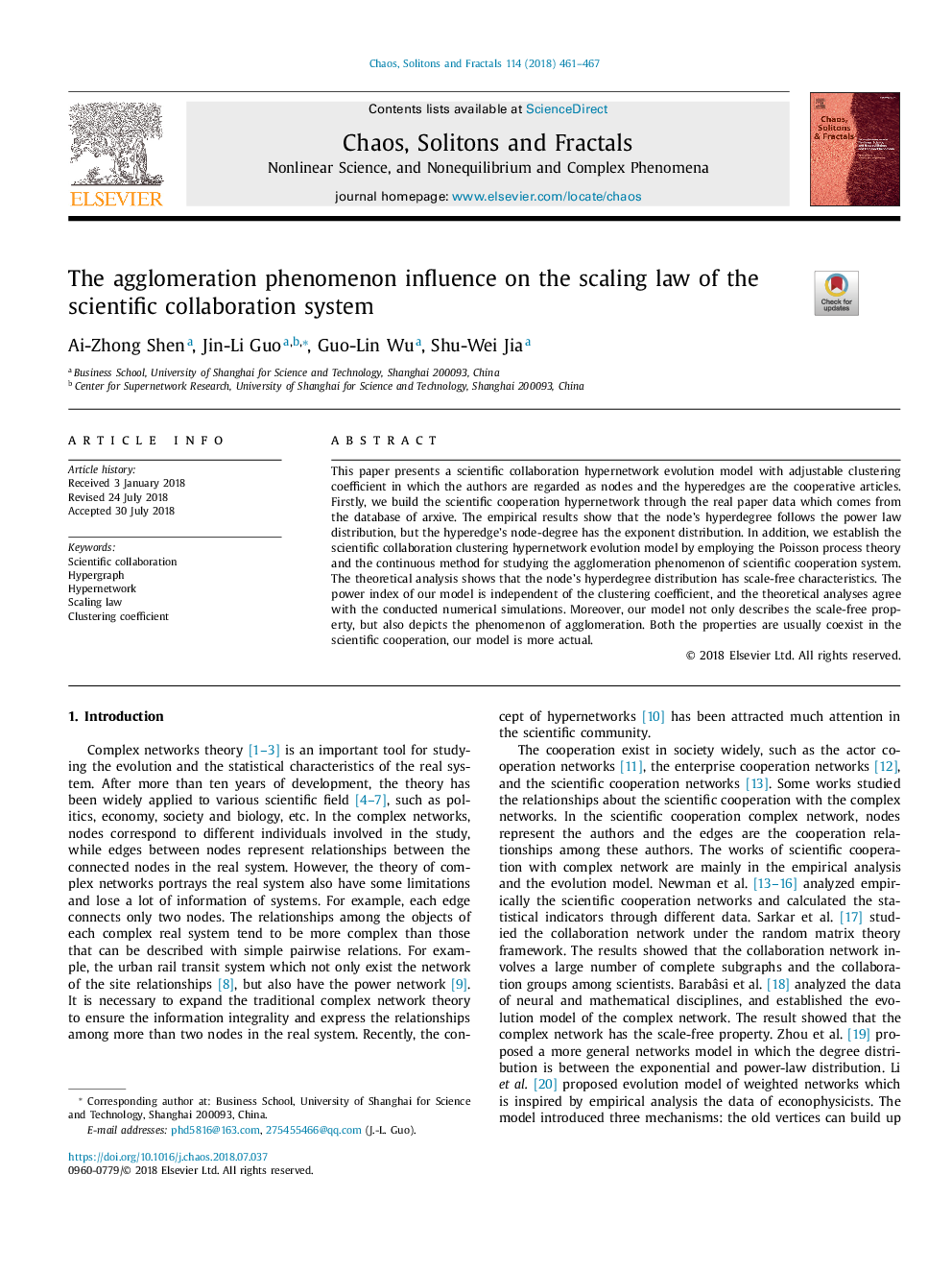| Article ID | Journal | Published Year | Pages | File Type |
|---|---|---|---|---|
| 8253421 | Chaos, Solitons & Fractals | 2018 | 7 Pages |
Abstract
This paper presents a scientific collaboration hypernetwork evolution model with adjustable clustering coefficient in which the authors are regarded as nodes and the hyperedges are the cooperative articles. Firstly, we build the scientific cooperation hypernetwork through the real paper data which comes from the database of arxive. The empirical results show that the node's hyperdegree follows the power law distribution, but the hyperedge's node-degree has the exponent distribution. In addition, we establish the scientific collaboration clustering hypernetwork evolution model by employing the Poisson process theory and the continuous method for studying the agglomeration phenomenon of scientific cooperation system. The theoretical analysis shows that the node's hyperdegree distribution has scale-free characteristics. The power index of our model is independent of the clustering coefficient, and the theoretical analyses agree with the conducted numerical simulations. Moreover, our model not only describes the scale-free property, but also depicts the phenomenon of agglomeration. Both the properties are usually coexist in the scientific cooperation, our model is more actual.
Related Topics
Physical Sciences and Engineering
Physics and Astronomy
Statistical and Nonlinear Physics
Authors
Ai-Zhong Shen, Jin-Li Guo, Guo-Lin Wu, Shu-Wei Jia,
